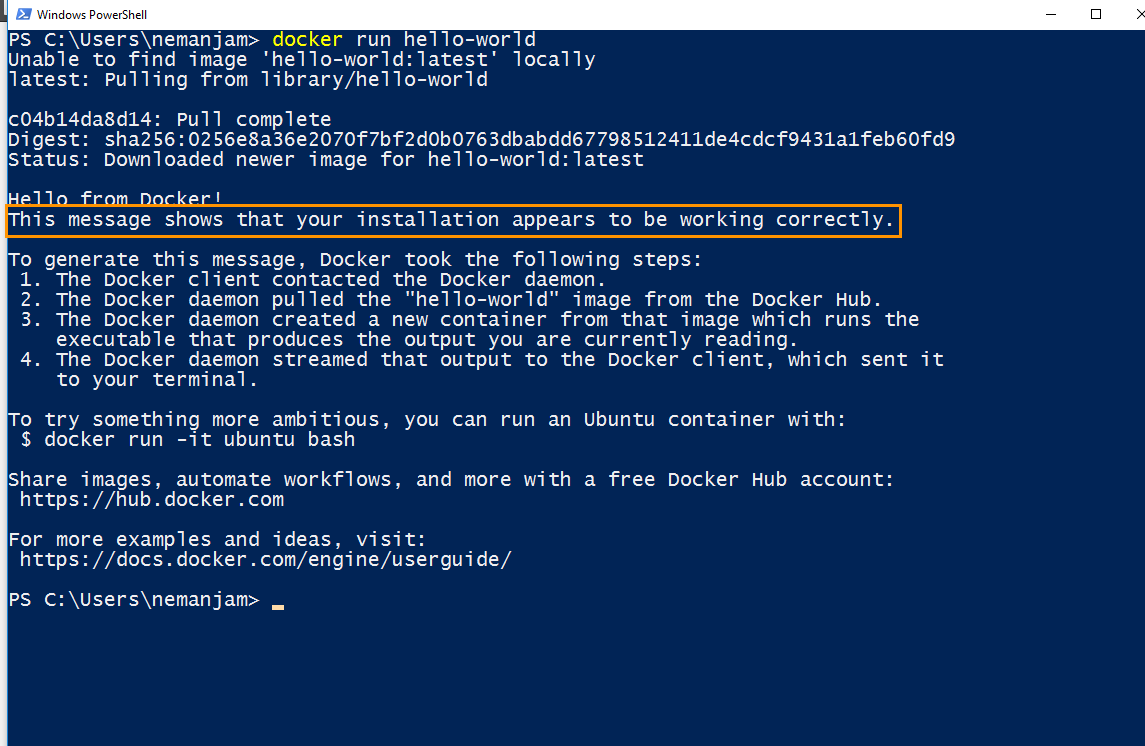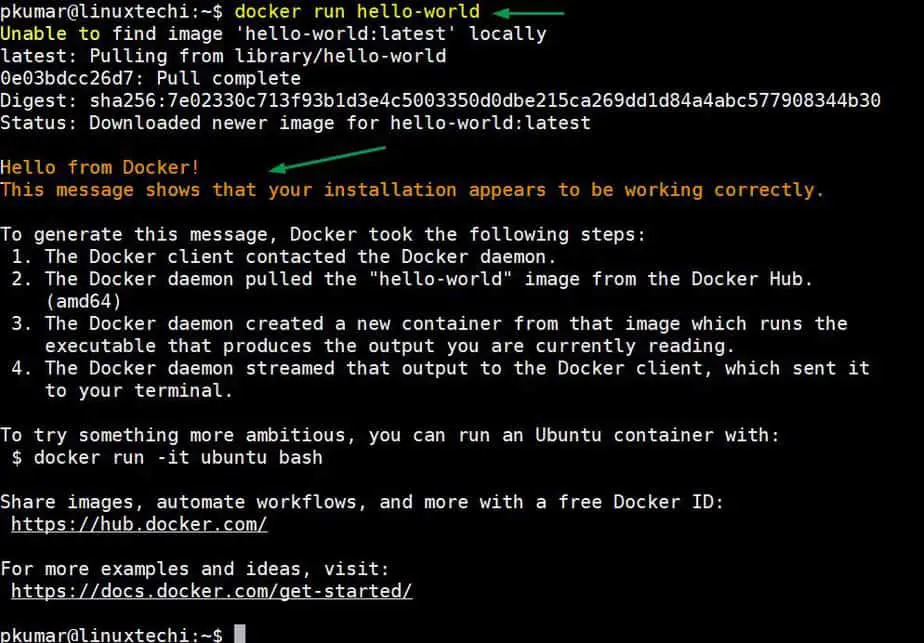
- #HOW TO DOCKER RUN IMAGE HOW TO#
- #HOW TO DOCKER RUN IMAGE FOR MAC#
- #HOW TO DOCKER RUN IMAGE SOFTWARE#
- #HOW TO DOCKER RUN IMAGE PASSWORD#
This is the unique ID of the container that is running the SQL Server instance. You can start the container byĭocker run -e ‘ACCEPT_EULA=Y’ -e ‘SA_PASSWORD=Str0ngPa$$w0rd’ -p 1433:1433 -d /mssql/serverįigure 6 – Starting the SQL Server Docker ContainerĪs you can see in the figure above, upon running the command as mentioned in the previous step, an ID is returned. A container in Docker is a running instance of the docker image. Once the SQL Server Docker image has been pulled and extracted, the next step is to start the docker container for Once in the directory, run the following command to pull the docker image from the repository to your local machine.ĭocker pull /mssql/serverįigure 5 – Pulling the official SQL Server Docker image from Docker Hub Let us create a directory for this exercise and open the terminal in

Now that Docker is up and running, the next step is to pull the official SQL Server Docker image from Docker Hub and get started. Open Terminal and type theįollowing command to see if Docker has been successfully installed on your machine.Īs you can see in the figure above, Docker has been installed successfully and we can see the installed version as well.

To use the terminal to use the Docker, however, you can also use the Desktop version. Now that we have installed Docker Desktop on our machine, we can go ahead and start using Docker. Will restart the Docker engine with the new memory configurations. Once you have allocated the memory as required, then go ahead and click Apply & Restart. Performance, you should allocate as much memory as possible.įigure 3 – Allocating memory to the Docker Engine Although allocating 4GB will suffice, however, to obtain better Here, we need to increase the default allocated memory of theĭocker engine to 6GB for SQL Server to run properly. Once it is installed, you can see the Docker icon being available on the status bar as follows. It might take some time for the Docker service to get up and running.
#HOW TO DOCKER RUN IMAGE FOR MAC#
You can follow this link to download Docker on your machine.įigure 1 – Docker Desktop for Mac Downloadĭownload the DMG file on your Mac and install the package. Let us get started by downloading Docker Desktop for Mac from the DockerHub. If you already have installed Docker previously, you can proceed to the next step.
#HOW TO DOCKER RUN IMAGE HOW TO#
Now that we know how to use SQL Server on MacOS, let us get started by downloading and installing Docker on our machine. In this article, we will get started by installing Docker on MacOS first, and then use the SQL Server Docker image from the DockerHub and connect to it using Azure Data Studio. This requires the SQL Server Docker image to be downloaded and installed on the local computer before using it. However, in order to install and use SQL Server on a Mac, you need to run the Linux distribution inside a docker container. You can now install SQL Server on Linux distributions like the RHEL, SUSE, Ubuntu, etc.

#HOW TO DOCKER RUN IMAGE SOFTWARE#
Previously, Microsoft supported SQL Server to be installed only on Windows Machines, however, starting from SQL Server 2017, Microsoft has started to distribute the software for Linux machines as well. We will learn more about Docker and using the SQL Server Docker image in this article. Docker helps users to build applications independent of the underlying operating system. SQL Server is widely used in various applications that support transactional and analytical workloads.ĭocker, on the other hand, is a containerization technology using which you can bundle your applications within a container and distribute them. SQL Server, as you might already be aware that it is one of the most popular relational database technologies in today’s world. This is useful when the Dockerfile RUN command should execute commands specific to the environment.In this article, I am going to discuss in-depth setting up docker and running a SQL Server Docker image. Using docker-compose, you can inherit env variables in docker-compose.yml and subsequently any Dockerfile(s) called by docker-compose to build images. Comment lines need only be prefixed with # The -env-file flag takes a filename as an argument and expects each line to be in the VAR=VAL format, mimicking the argument passed to -env. If you have many environment variables and especially if they're meant to be secret, you can use an env-file: $ docker run -env-file.
#HOW TO DOCKER RUN IMAGE PASSWORD#
Or, if you don't want to have the value on the command-line where it will be displayed by ps, etc., -e can pull in the value from the current environment if you just give it without the =: sudo PASSWORD='foo' docker run -e PASSWORD name container_name dockerhub_id/image_name e POSTGRES_ENV_DB_NAME='mysite_staging' \ e POSTGRES_ENV_POSTGRES_PASSWORD='foo' \ You can pass environment variables to your containers with the -e flag.Īn example from a startup script: sudo docker run -d -t -i -e REDIS_NAMESPACE='staging' \


 0 kommentar(er)
0 kommentar(er)
